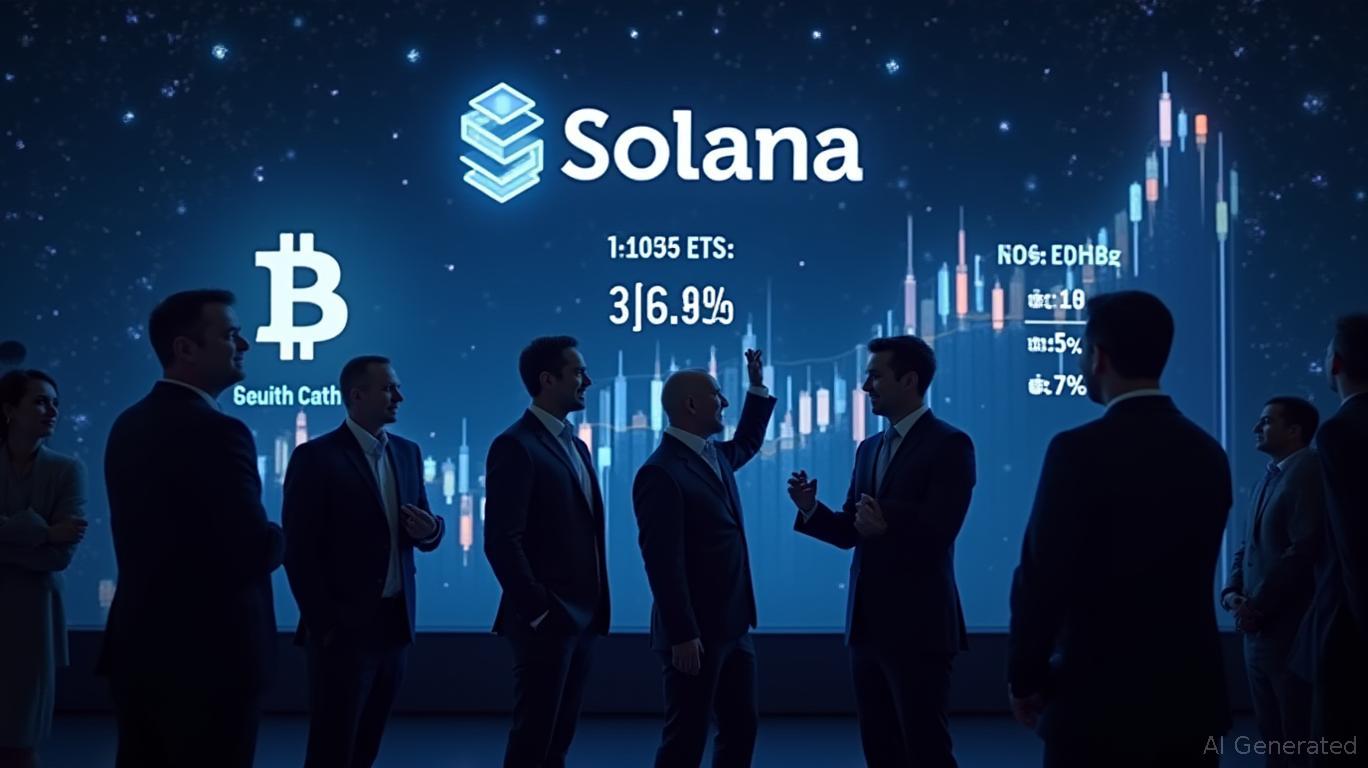Deutsche Bank and DWS Support EURAU's Multichain Growth in Line with MiCA Regulations
- AllUnity's EURAU, a MiCA-compliant euro-pegged stablecoin, expanded cross-chain capabilities via Chainlink's CCIP to support Ethereum, Solana, and other major blockchains. - Backed by Deutsche Bank and DWS, EURAU aims to enhance B2B payments and treasury management while complying with EU regulations requiring reserve audits and transparency. - The expansion positions EURAU as a euro-centric alternative to dollar-dominated stablecoins, aligning with EU efforts to reduce reliance on foreign payment system
AllUnity has enhanced its EURAU stablecoin—a euro-backed digital asset that meets the EU’s Markets in Crypto-Assets (MiCA) standards—by expanding its cross-chain functionality through Chainlink’s Cross-Chain Interoperability Protocol (CCIP). Announced in October 2025, this upgrade allows EURAU to function smoothly on
Supported by

This expansion is in line with wider regulatory initiatives to create a solid framework for stablecoins. MiCA, which became effective in late 2024, requires clear disclosures, reserve verifications, and consumer safeguards for digital assets, as detailed by
AllUnity’s initiative highlights the increasing involvement of European financial institutions in tokenized assets. Deutsche Bank and DWS, whose combined assets surpass €2.6 trillion, are applying their traditional finance knowledge to address risks tied to crypto market fluctuations, Cointelegraph reported. At the same time, the
Despite positive outlooks, some critics warn that private stablecoins, unlike central bank digital currencies, do not carry the sovereign backing of central banks. The Bank for International Settlements (BIS) has observed that stablecoins “do not function well as money” because they rely on short-term reserves and are vulnerable to market volatility, as noted by Positive Money. The future of EURAU will rely on its ability to maintain transparency and regulatory compliance as Europe’s digital finance landscape continues to evolve.
Disclaimer: The content of this article solely reflects the author's opinion and does not represent the platform in any capacity. This article is not intended to serve as a reference for making investment decisions.
You may also like
Bitcoin Updates: Swiss Crypto Lending Offers 14% Returns Alongside Bank-Backed Insurance
- Swiss crypto lender Fulcrum offers 14% APR on stablecoins with Lloyd's insurance and FINMA regulation. - Platform uses 50% LTV over-collateralization and institutional-grade security to mitigate market risks. - Targets inflation-hedging investors by bridging traditional finance gaps with insured crypto yields. - Competes with alternatives like Bitget's zero-interest loans but emphasizes regulatory compliance and capital preservation.

Bitcoin News Update: Analyst Highlights How MSTR's Convertible Bonds Prevent Forced Bitcoin Sales
- MSTR's convertible debt structure allows debt repayment via cash, stock, or both, avoiding Bitcoin sales during market downturns. - The company raised €350M through a 10% dividend-bearing euro-denominated preferred stock offering to fund Bitcoin purchases. - Q3 results showed $3.9B operating income from Bitcoin gains, driving a 7.6% stock surge to $273.68 post-earnings. - Risks persist if Bitcoin fails to rally in 2028, potentially forcing partial liquidation amid $1.01B 2027 debt obligations. - MSTR hol

Solana News Today: Solana ETFs Surpass Bitcoin as Staking Returns Attract Institutional Investments
- U.S. spot Solana ETFs (BSOL/GSOL) attracted $199M in 4 days, outperforming Bitcoin/Ethereum ETF outflows. - 7% staking yields drive institutional inflows as investors rotate capital from major crypto assets. - Despite ETF success, SOL price fell below key support levels, raising concerns about $120 price floor. - Strategic staking and treasury purchases boosted Solana's institutional appeal, with $397M in staked assets. - Market remains cautious as ETF competition intensifies, with Bitwise's BSOL outpaci

Bitcoin News Today: Bitcoin’s Fourth Quarter Surge: Impact of Trade Disputes, Stronger Dollar, and Evolving Global Economic Strategies
- Bitcoin fell nearly 15% in October 2024, its worst quarterly start since 2022, driven by U.S.-China trade tensions, dollar strength, and macroeconomic caution. - A 100% U.S. tariff on Chinese imports and Fed rate-cut delays exacerbated selloffs, triggering $1.3B in liquidations during a flash crash below $103,000. - Key support levels at $107,000 and $101,150 face retests as traders warn of further declines, with market cap dropping below $3.6T amid fragile liquidity. - Wintermute denied Binance lawsuit
